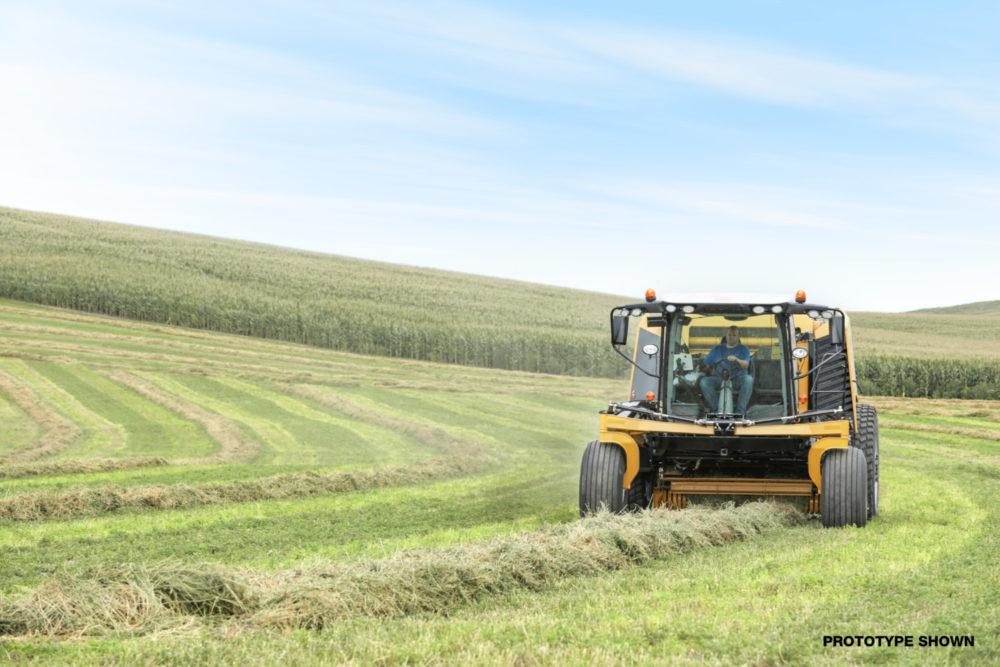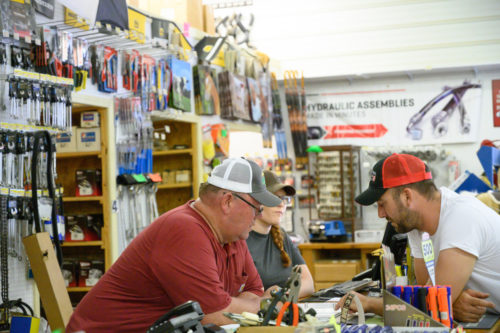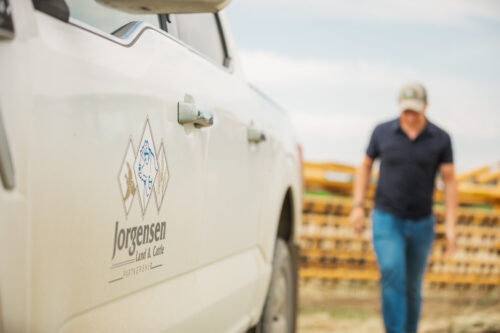Unveiling the ZR5
February 2018
Last September, Vermeer unveiled a first-of-its-kind, self-propelled round baler prototype — the ZR5. The machine unveil, which took place at Husker Harvest Days in Nebraska, captured the attention of the agricultural world, with stories and videos about the ZR5 generating millions of impressions and views within the first few days.
Why so much interest in the ZR5?
“Farmers and ranchers are facing one of the same challenges they did in 1971 when Gary Vermeer introduced the round baler, and that is labor,” Vermeer Executive Vice President Mark Core said at the launch. “As access to labor in rural areas becomes more limited, we believe the type of innovation needed to design the ZR5 will need to continue to pave the way for more efficiency, productivity and an eventual reduction in labor needed to produce the same amount of feed. I’m happy to say Vermeer is proud to be making this investment in innovation and dedicated to leading the way.”
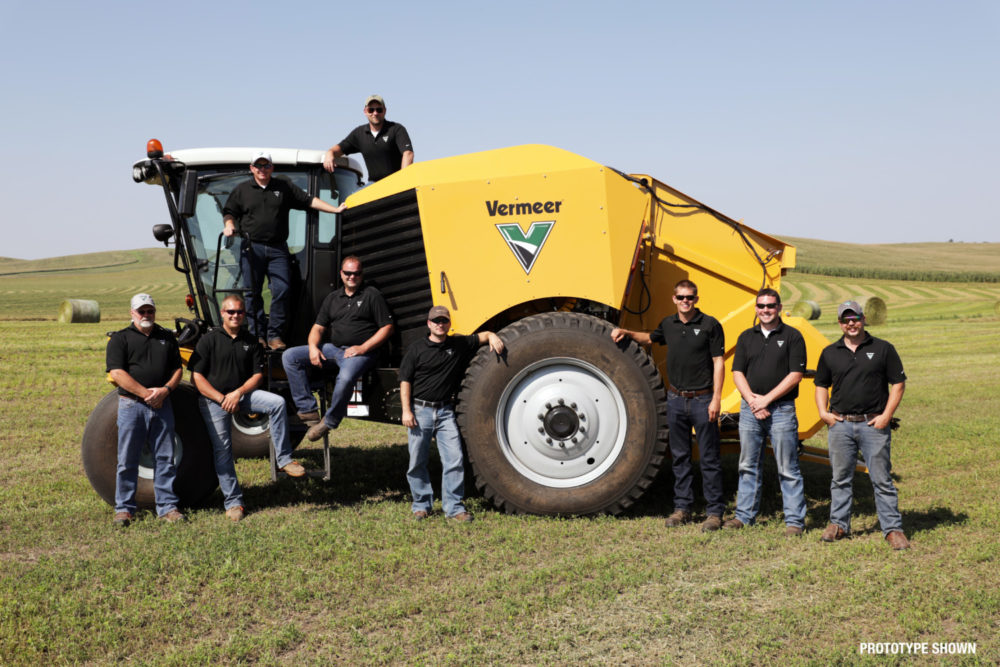
Origins of the ZR5: Designing and Testing
Vermeer engineers first presented the idea of the ZR5 to the Vermeer Forage Innovations Board in January 2015 and received the green light to pursue the project. A small team began designing the machine in September of that year, and the first concept was completed a few months later just before Christmas.
The next step was to perform live testing in the field. Kent Thompson, Research and Development Manager of Forage Innovations at Vermeer, said his team took every precaution while testing the ZR5 the following spring to keep it out of the public eye.
“We tried to transport the machine at night and test in remote locations to keep the machine off the internet. We still had lots of people stopping to try and take pictures of the machine. That’s when we thought we might have something.”
Now that the ZR5 has been introduced to the public, Thompson said it’s much easier to perform testing in different crops and across North America. For instance, the ZR5 spent last fall baling cornstalks in Iowa and Nebraska. Because the ZR5 is designed for high output operators who demand the highest standards in performance and dependability, the Forage Innovations team will continue to test the machine all the way up to the official market launch.
Innovative features and full automation
Perhaps the most notable feature of the ZR5, aside from self-propulsion, is its ability to perform zero-radius turns. The zero-radius turning feature provides two major benefits: (1) the increased efficiency when turning on the end row, and (2) the ability for the ZR5 to “quarter-turn” when ready to eject a bale.
The integrated quarter-turn is an automated process. The ZR5 baler stops automatically when the bale hits full size. It then applies net and rotates the machine before ejecting the bale at a pre-set angle (90 degrees). Positioning bales in a straight row can lead to a 35 percent savings in time when it comes to picking up bales and loading them.
According to Thompson, inspiration for zero-radius turning was found right in his own backyard.
“I consider myself to be a zero-turn mower guy, so that’s where the idea came from,” Thompson said. “This technology on riding lawnmowers has cut my personal mowing time in half and baling hay isn’t that different — you’re just following rows back and forth. Zero-radius turning allows you to make nice, tight turns so you don’t have to skip a windrow. This is huge because if you’re not in the crop you’re not being productive. With this machine you’re saving time at every turn.”
One of the biggest performance benefits of the ZR5 is its automation. According to Thompson, the nine steps traditionally associated with producing a bale can be cut down to just one. The ZR5 performs quarter-turns automatically as well, which was a big moment for Thompson’s team.
“The ability to perform a quarter-turn automatically, without having to touch anything, was the big ‘aha’ moment for us,” Thompson said. “It’s like the first time you watch a car automatically parallel park itself — you know it’s bound to make life easier for a lot of people.”
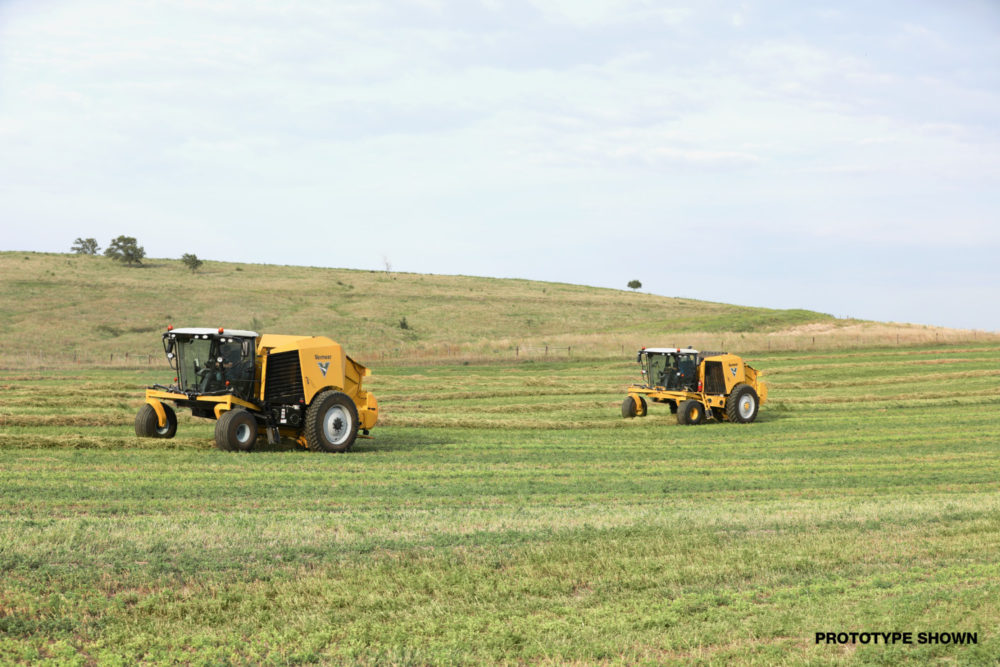
A new view of baling
The ZR5 cab is mounted on the front of the machine and on top of the suspension. This differs from most ag equipment, which position the operator over the drive axles. Initially, Thompson and his team were concerned this would cause some operators to experience motion sickness. What they experienced, however, was a surprisingly smooth ride.
“Once we started running the machine it became a non-issue, and we were all surprised at just how smooth of a ride the ZR5 delivers,” Thompson said. “What really drove it home is when we hopped back into a traditional tractor-baler combo and started bouncing through the fields. Doing that all day can take a toll on the operator. The ZR5 has a smooth ride even at higher speeds.”
With the cab up front and bale chamber in the back, much of the weight distribution is centered on the rear end of the machine. According to Thompson, this provides the necessary traction to perform zero-radius turns on flat ground and on hillsides.
The need for speed
The current ZR5 prototype features a hydrostatic transmission in its ground drive and a hydraulically driven baling unit. The prototype currently has a 173-hp Tier 4 Final Cummins diesel engine. The ZR5 can run down the road at 30-plus miles per hour, which is especially beneficial to commercial operators needing to move quickly from field to field. Therefore, it’s not only smooth — it’s fast.
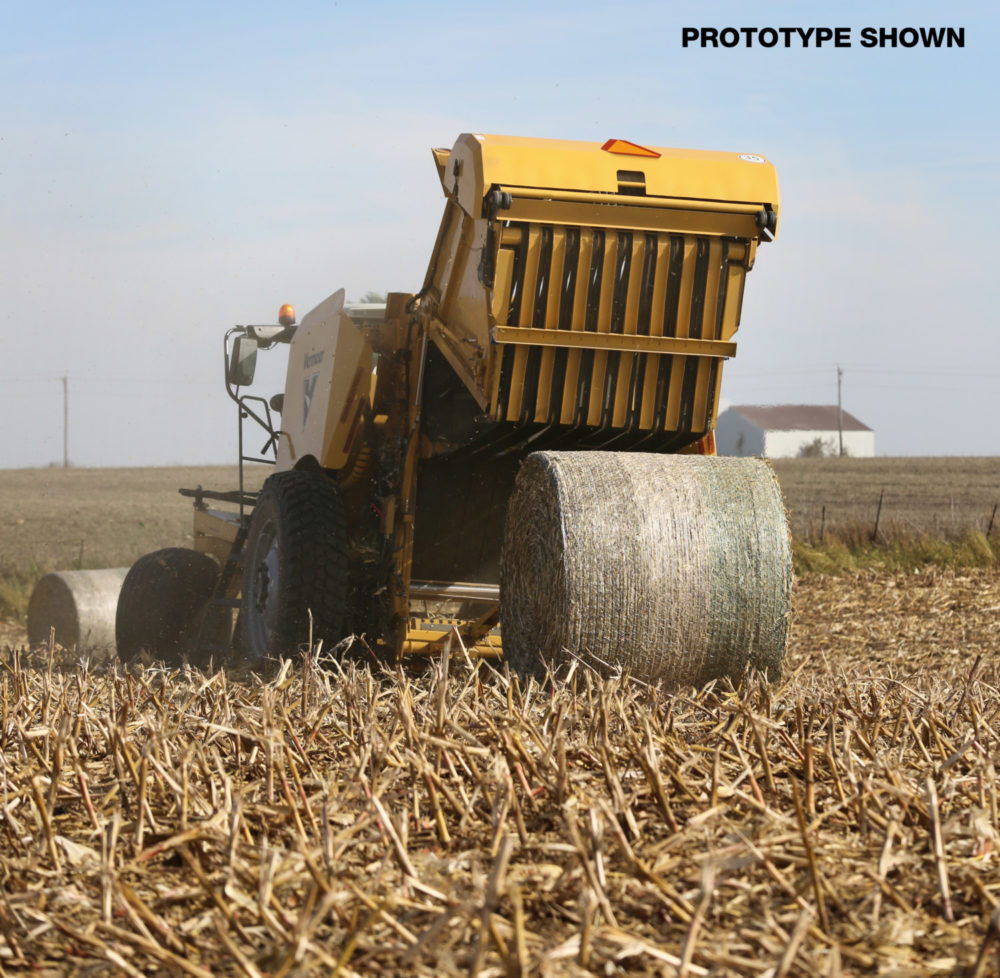
Frequently asked questions
Since launching the ZR5 in September, the Vermeer team has fielded all sorts of questions. The most popular among them are:
How can I see the pickup?
“The machine design doesn’t allow operators to turn around and see the pickup directly, which at first is a bit different for them,” Thompson said. “A camera positioned under the cab of the ZR5 gives you a better view of the pickup without having to look backwards.”
Where’s the engine?
“The engine is tucked between the cab and the bale chamber, for improved weight distribution and optimum machine layout,” Thompson said.
What’s the life of the machine?
“We’re continuing to perform lab and field testing, so we can’t say with any certainty just yet but it is intended for the high-end user,” Thompson said. “The ZR5 will allow owners to switch out the bale chamber in just a few minutes by unhooking a series of quick-connect hoses and an electric wiring harness. This also helps operators easily perform routine maintenance on the bale chamber.”
A simple conclusion
After seeing the machine for the first time and learning how it functions, Thompson said most people have the same reaction. “Mostly they say that they can’t believe how simple it is. As an engineer, that’s a compliment.”
